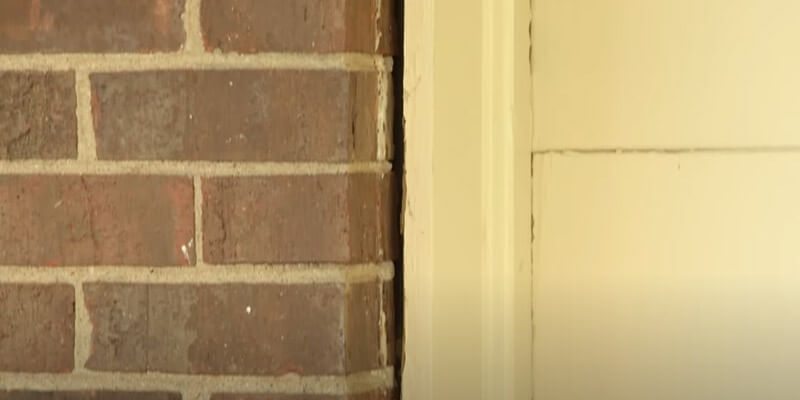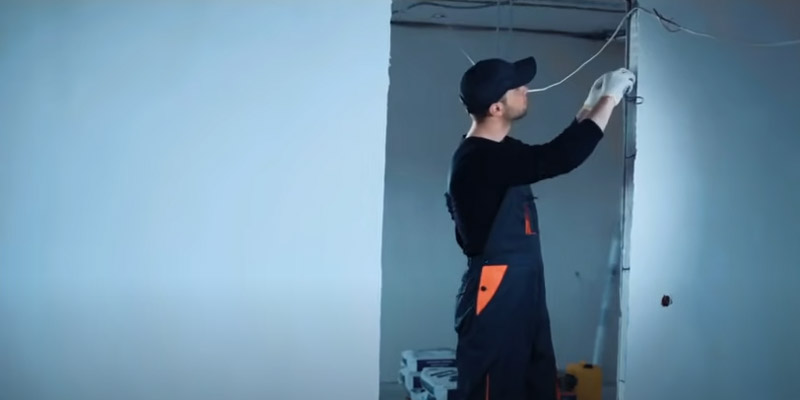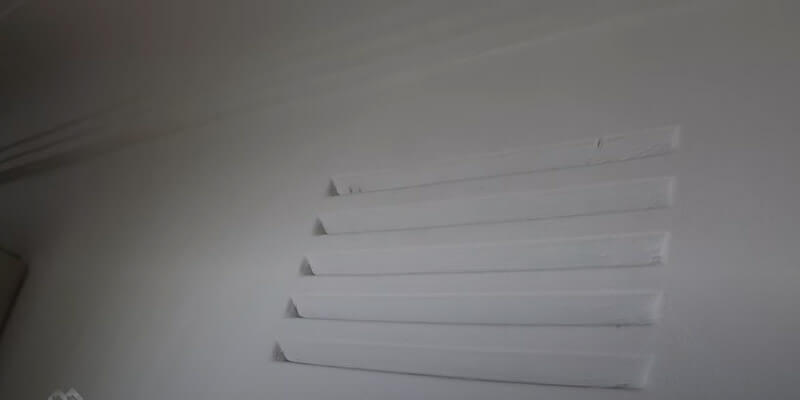The pandemic has forced many people to reconcile with the idea of working from home. It offers you more control over your working period. Also, spending quality time with your kids creates more time to be a loving parent.

However, the issue with this seemingly great idea is the amount of disturbing and irritating background noise you must bear. From your child’s ruckus to the stomping noise of your upstairs neighbor, working from home might be more challenging than you thought if you don’t find a solution sooner. Besides, studies have shown that high noise levels decrease productivity over time.
With few options at your disposal, soundproofing your home office might be your best bet. While this route can be expensive and over your budget, there are cheap ways to soundproof a home office.
Luckily, this article covers the basic steps to transforming your noisy work environment into a quiet, productive-friendly space.
8 Cheap Ways to Reduce Noise In a Home Office
1. Seal all cracks and holes
The first step to blocking out the noise from your home office is dealing with the underlying causes, which in most cases are cracks and holes. Concrete walls tend to have openings; even the smallest ones are big enough for the sound to travel through.

You cannot effectively soundproof your home office by inspecting and sealing the cracks and holes in the walls and ceilings. Jumping the step might cause all other efforts to soundproof your work environment a fizzle. Although this process will take a while, it’s worthwhile, and you’ll be glad to have sealed out this likely noise source.
But, how do you seal the cracks and holes after finding them?
There are different options for filling the holes and cracks in your walls and ceiling. However, we recommend using fiberglass batt insulation. This material is well known for its impeccable thermal insulation properties. However, it’s a decent choice for absorbing sound.
Sealing with fiberglass batt insulation creates a vibration-absorbing barrier, which impedes the easy transmission of sound from an external area to your space.
2. Soundproof the door(s)
Most homes’ interior doors are hollow and for several good reasons. Therefore, your home office’s door is likely hollow, which means ample space for noise to travel through. However, it offers the least resistance to migrating noise.

Hence, it’s paramount to soundproof the door to attenuate the sheer amount of noise that goes through it. Quite frankly, this can be challenging, especially if this is the first time on a soundproof project.
Nonetheless, there are easy and quick ways to do this if you consider yourself handy enough and tight on budget.
Use weatherstrips to seal gaps in your door/frame
The soundproofing weatherstrip is the way to go for people not looking to splurge on an expensive, state-of-the-art soundproofing material.
The weatherstrip has an adhesive that makes it easier to install on your door in a couple of minutes. They are initially designed to keep rain and water out of your space.
Thanks to their fiberglass construction, these weatherstrips can help dampen the noise. However, the latest versions come with soundproofing properties to help block out noise more effectively.
Use a soundproof door blanket
Another budget-friendly option is the soundproof door blanket, installed behind the door to prevent most noise from traveling through effectively.
Change the door
This is the quickest but the most expensive option. While purchasing a new, soundproof-oriented door for your home office might cost more, it provides you with the best soundproof result 一 quiet and peace.
If you are not tight on budget, save yourself the stress of purchasing several soundproofing materials to fix gaps in your door and install a new, solid door.
Draft stopper
If you placed a carpet on your home office floor, you might want to use a draft stopper. This incredible device is installed under the carpet directly under the door to provide reliable sound insulation.
Like weatherstripping, this option was initially intended to provide impressive thermal insulation. However, draft stoppers have come in handy these days for dampening sound, thanks to their sound-absorbing properties.
Add a second door
If your home design permits it, you can fix another door to add more resistance to the migrating noise path. However, this would mean your home office will have two doors, and you have to go through them to access your workspace.
3. Don’t ignore the air vents
When it comes to soundproofing a room, the air vents are easily and often overlooked, which is a big mistake. Air vents are large openings that might be the underlying culprit to your irritating noise problem.

Here are several options for soundproofing the air vents. The common ones include using expanding foam to block the air vent up or creating a sound labyrinth in the vent.
Regardless of the way you choose to go, you should notice a significant reduction in the amount of sound permitted to travel through the air vents without obstructing the already-excellent air flow and circulation.
4. Soundproof the windows
Obviously, windows, like doors and air vents, allow external noise to travel through. This can be challenging, especially if you have lousy neighbors or live on a noisy street.

Similar to soundproofing your hollow interior doors, you can either lean toward the pricey option or stick to cheap alternatives. The best soundproof windows for a home office would be double-paned with a spacer separating them. The formal would mean purchasing soundproof windows and hiring a professional to fit them for you.
On the other hand, purchasing soundproof curtains is your best bet for people not looking to break a bank soundproofing their windows. For best results, ensure the soundproofing curtains are fitted from the ceiling to the floor.
Also, you can check for gaps in the window frame and seal them (if any) with fiberglass batt insulation. Plus, installing an additional window pane increases the mass of your windows, which is one of the best ways to block out-migrating external noise.
5. Purchase a white noise machine
You don’t have to beat yourself up if you are only looking to ignore the background noise and focus on your task. White noise machines are great options for improving your concentration for better productivity.
This effective machine generates a stable sound frequency with a soothing effect. Hence, most people use the white noise generator for meditation, increasing sleep quality, and in the baby’s room.
While this device does not soundproof your home office in any way, these little machines override the irritating noise migrating into your workspace for increased focus and concentration.
6. Soundproof the walls
Soundproofing your home office walls might require you to shell out more since you’ll be installing noise-absorbing materials inside or outside the walls and/or adding an extra layer of drywall.
You can add Mass Loaded Vinyl or mineral wool batts on the studs directly or between them to increase the mass of your walls. These materials are effortless to cut into desired sizes to fit into small or uneven joists.
Regardless of your options, Mass Loaded Vinyl or mineral wool, you should be able to block out vibration and airborne noise. However, we prefer the formal because of its incredible flexibility and ease of use. Plus, it delivers better acoustic results with structure-borne or impact noise.
Another method to increase the overall mass of your wall is installing acoustic panels or placing Mass Loaded Vinyl directly on the wall’s surface. But you might want to avoid using the Mass Loaded Vinyl on visible areas, as it will look ugly on your wall. Instead, opt for acoustic panels, which will dampen the noise and add exciting visuals.
7. Soundproof the floor
Floors are another source of irritating noise. Hard floor surfaces are responsible for echoes since they reflect sound waves.
To solve this, it’s advisable to place some soft rugs in your home office to help absorb the noise instead of reflecting it. Suppose the disturbing noise source is a laundry room or garage located directly below your home office. In that case, you should consider installing a sound deadener mat before placing your exquisite carpet.
8. Using soundproof paint
Do you know you can dampen noise using soundproof paint? I bet many of you haven’t heard of this or trust this option for blocking out noise and absorbing sound.
There are many products out there, from good to great, to help with your acoustic management. The best soundproof paint should feature sound-absorbing pigment fillers and microspheres to help prevent sound from bouncing off the ceiling and walls of your home office.
This method is a relatively cheaper way to attenuate the easy transfer of noise from the other room to your space.
What are Some Inexpensive Materials that can Help with Soundproofing?
When it comes to soundproofing on a budget, there are several inexpensive materials that can do the trick. One option is weatherstripping tape, which is typically used to seal gaps around windows and doors. By applying this tape to any cracks or openings in your walls or windows, you can significantly reduce the amount of noise that enters or escapes from a room.
Another cost-effective material is mass-loaded vinyl (MLV). This dense and flexible material can be hung on walls or ceilings to block out sound. It’s particularly effective for reducing low-frequency noises like traffic or machinery sounds. Additionally, MLV can be easily cut and installed, making it a convenient choice for DIY soundproofing projects.
Lastly, foam panels or acoustic tiles are another affordable solution for soundproofing. These lightweight materials absorb sound waves and minimize echo in a room. They can be easily attached to walls using adhesive strips or glue, allowing you to create a more acoustically balanced space without breaking the bank.
Remember, while these materials can help with soundproofing on a budget, they may not provide the same level of insulation as more expensive options. However, by combining multiple inexpensive materials and implementing them strategically in your space, you can still achieve noticeable improvements in reducing noise levels.
Related FAQs
Yes! You can completely soundproof a room by adding more mass to the walls and ceilings alongside state-of-the-art soundproofing accessories.
The most inexpensive way to soundproof a shared wall is thick blankets and quilts. You can also move your furniture or bookshelf to the shared wall to help dampen the noise.
Adding acoustic panels and foam to the walls is the easiest and best method to block out the noise from traffic, nearby construction sites, or loud neighbors. Also, a sound booth can come in handy.
Conclusion
Working from home comes with many benefits, especially a chance to be your own boss. However, the noise can be distracting and annoying, which might be why your productivity has significantly dropped over the past few months.
To tackle this issue, it’s best to implement one or more of the acoustic solutions discussed in this post. Everyone has an option, depending on how much you’re willing to invest in soundproofing your home office.
Hopefully, you have successfully found cheap ways to soundproof a home office for a quiet and peaceful work environment.
